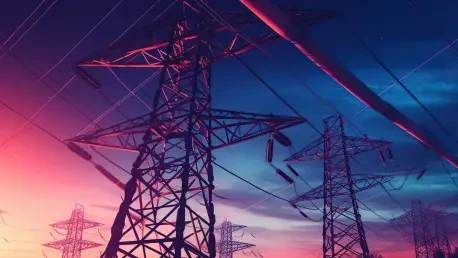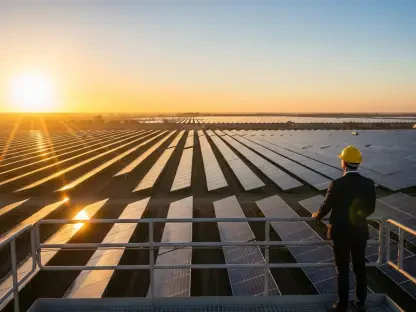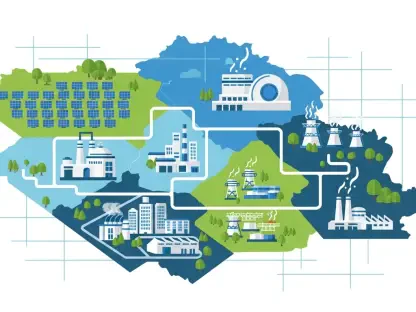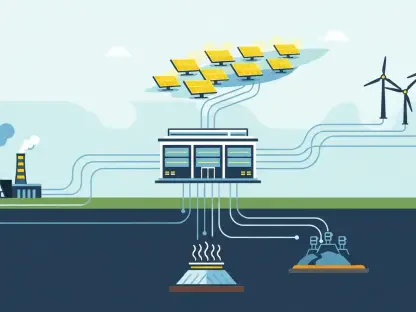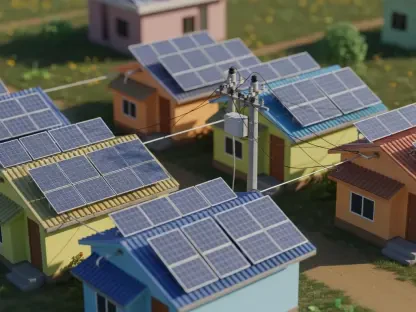In an era defined by technological advancement and the urgent necessity for sustainable energy solutions, Christopher Hailstone stands out as a leading authority. With extensive expertise in energy management, renewable energy, and the evolution of electricity delivery, Hailstone lends his insights on modernizing the traditional utility framework. Today, we dive into a compelling conversation about transforming our electricity grid into a more dynamic, efficient entity in the 21st century.
Can you describe the current structure of the electricity grid and how it was developed in the early 20th century?
The electricity grid was developed as a centralized system in the early 20th century to efficiently manage the production and delivery of power. It was designed to scale up energy distribution to meet growing demand while maintaining reliability through monopoly control, which was legislatively enforced. This model ensured guaranteed revenue, built up around the idea of constructing excess generation capacity for capital investments. However, this structure is now significantly challenged by modern electricity demands, which are far more diverse and less predictable.
What are some of the main challenges with the traditional utility monopoly model in adapting to modern electricity demands?
The traditional utility model struggles with its rigidity and costliness. As electricity use diversifies, the old framework finds it difficult to adapt swiftly and cost-effectively. The insistence on building high-cost infrastructure to meet peak demands that occur infrequently is both economically and environmentally unsustainable, and this model does not encourage innovation or efficient resource use.
How could reimagining utilities as more like internet service providers benefit the energy sector?
By viewing utilities as similar to internet service providers, we can rethink them not just as suppliers but as platforms that foster innovation. This could encourage the development of new technologies and services, much like how the internet has grown and evolved. It offers significant opportunities to improve efficiencies, integrate renewables, and engage consumers actively in the energy ecosystem.
What are some basic facts about how our current electricity grid operates, especially in terms of supply and demand?
The electricity grid is fundamentally a balance between supply and demand, working almost instantaneously to keep power available as needed. Unlike a battery, it doesn’t store electricity; when you switch on a device, the grid must adjust almost immediately. This delicate balancing act is maintained with great precision, but it is challenged by fluctuating demand, especially during unexpected spikes.
How does the current grid system attempt to balance supply and demand, and what are the limitations of this approach?
The system uses a mix of base-load plants, which provide consistent power, and peaker plants, which activate during demand spikes. However, this approach is inefficient, as peaker plants often remain idle for most of the year, waiting for those rare peak times. The reliance on constructing more of these costly plants is a significant limitation, both financially and from a resource allocation perspective.
Why is the concept of peak demand so crucial in the current energy infrastructure?
Peak demand dictates the maximum capacity the grid must be able to handle. Utilities build their infrastructure around these rare high-demand periods, which are expensive and lead to resource over-investment. Yet, these peaks occur infrequently, highlighting the inefficiency of such investment strategies in the traditional model.
What are gas peaker plants, and why are they considered inefficient in the current system?
Gas peaker plants are facilities that only activate during periods of high demand. They are necessary under the old model but are inherently inefficient because they operate very rarely, remaining dormant 99% of the time. Despite their critical role during demand spikes, the continuous investment required does not match the actual limited use, making them economically disadvantageous.
How could existing battery storage systems, like electric vehicles, redefine energy storage and distribution?
Electric vehicles (EVs) represent a transformative shift in energy storage and distribution. With bi-directional charging, EVs can both draw from and supply power to the grid, acting as mobile storage units. This flexibility not only alleviates demand spikes but also provides a decentralized solution where energy resources are distributed, reducing dependence on large, centralized infrastructures.
Can you explain how a virtual power plant (VPP) works, using Michigan’s electric vehicles as an example?
A virtual power plant leverages the existing distributed energy resources, like EVs, as integrated parts of the energy system. In Michigan, for instance, the EV fleet could contribute to grid stability by offering stored battery capacity during peak periods. This functional integration is achieved through bi-directional chargers, which allow vehicles to discharge power back into the grid, creating a scalable and flexible energy solution at a fraction of traditional infrastructure costs.
What is the potential capacity of the VPP resource in Michigan, and how does it compare to traditional energy infrastructure?
Michigan’s existing EVs and bi-directional charging technology could theoretically offer a VPP capacity of up to 1.15 GW, surpassing some current capabilities of traditional infrastructure. This potential can be tapped without massive infrastructure expenditures, contrasting sharply with conventional, cost-heavy approaches that rely on constructing new gas peaker plants.
How does the cost of investing in bi-directional EV chargers compare to building new gas peaker plants?
Investing in bi-directional chargers for EVs is significantly more cost-effective than constructing new gas peaker plants. For instance, supplying all of Michigan’s 100,000 EVs with these chargers could be achieved for around $400 million, in contrast to spending billions on new peaker plant infrastructure. This represents a sustainable and economically viable solution to energy demands.
How could a power plant built from new electric vehicles offer a practical solution for peak demand?
By leveraging new electric vehicles as a dynamic energy resource, a comprehensive power plant-like solution can be developed. This approach not only covers peak demand periods through distributed participation but also supports year-round energy needs, thus balancing the grid more effectively and sustainably than traditional methods.
What are the benefits of a VPP model over traditional power plant investments?
The VPP model offers greater flexibility, scalability, and cost-effectiveness. Unlike traditional power plants, which require large upfront investments and lengthy development times, VPPs use existing resources and can be rapidly deployed. They help prevent energy wastage, minimize environmental impacts, and encourage the widespread adoption of renewable technologies.
How can VPPs offer grid services, and what are some examples of these services?
VPPs provide a range of grid services, such as load balancing, peak shaving, and energy storage optimization. By aggregating resources like EVs and solar panels, they help smooth out supply-demand imbalances, facilitate renewable integration, and offer backup power solutions, which enhances the grid’s resilience and efficiency.
Why should ratepayers consider investing in distributed energy resources instead of supporting new power plants?
Investing in distributed energy resources empowers ratepayers to become active participants in their energy consumption and supply. These investments are often more economical, reduce dependency on centralized power plants, and promote a cleaner energy mix, ultimately leading to lower costs and a more sustainable grid infrastructure.
In what ways is the energy transition already happening, and how can it be accelerated with VPPs?
The transition is unfolding through the increasing adoption of solar panels, EVs, and energy efficiency upgrades, which contribute to a decentralized energy grid. VPPs can accelerate this by orchestrating these disparate resources into a coherent, responsive infrastructure that meets modern energy demands efficiently and sustainably.
How can utilities adapt to these changes to remain relevant and cost-effective?
Utilities can evolve by embracing the distributed model and investing in grid modernization technologies like smart meters and bi-directional chargers. By facilitating consumer involvement and encouraging the integration of renewables, utilities can maintain their relevance and continue to provide cost-effective, reliable service in a changing energy landscape.
What role do solar panels, heat pumps, and energy efficiency upgrades play in forming VPPs?
These resources provide essential components of VPPs by enhancing the grid’s resilience and flexibility. Solar panels reduce reliance on fossil fuels, heat pumps improve energy efficiency, and upgrades minimize consumption, collectively contributing to a resilient, responsive energy system that meets modern demands adeptly.
Do you have any advice for our readers?
Stay informed and consider the potential of your energy decisions. By investing in technologies that contribute to a more distributed and sustainable grid, you not only lower costs but also play a vital role in transforming the energy landscape toward a greener, more efficient future.
